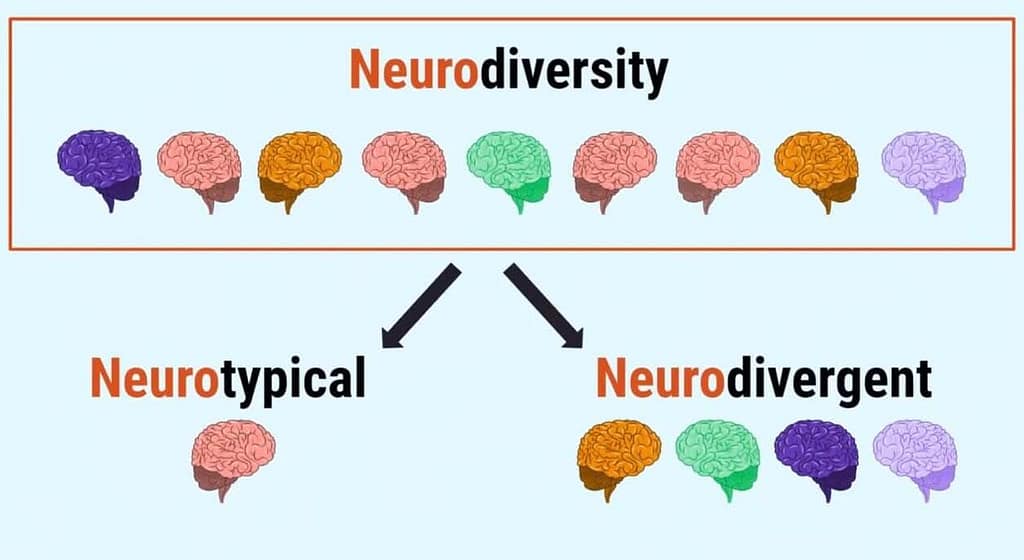
Introduction
Have you ever caught yourself or someone you know saying, “I have OCD of putting things where they belong,” “ I am so restless that I can’t focus today?” In the twenty- first century, people use that frequently as slang to express themselves without knowing the actual context.
My point is-
What if these are just more than expressions?
What if these traits are a part of a deeper notion that shapes the way we think, act, interact, live in this beautiful world?
What if your brain works in another way– is that something to celebrate or something to fix?
Let us dwell deeper into neurodivergence, its complex nature, the uniqueness and understanding how to identify neurodivergence in yourself or others around you.
By the end of this article, you will be able to see the creation of mind in a completely new light!
Understanding Neurodivergence
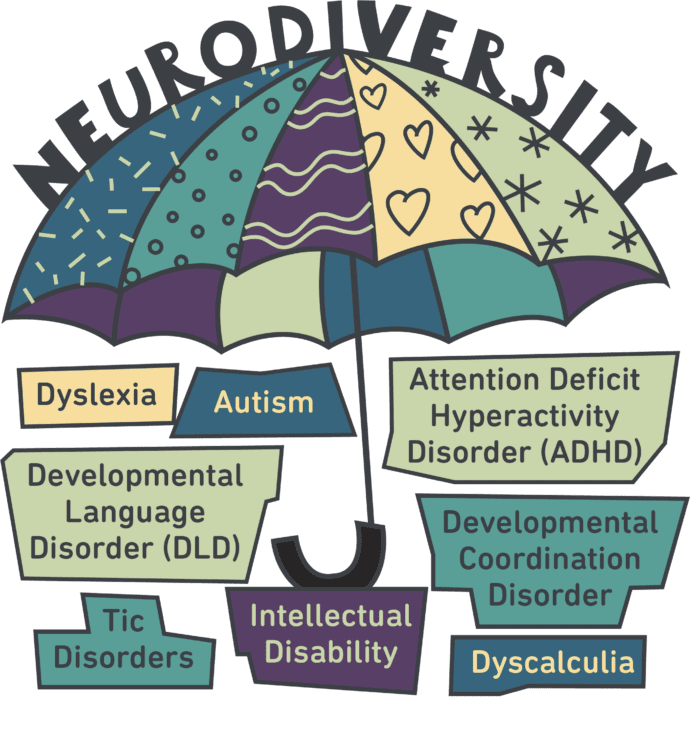
Neurotypical VS Neurodivergent
Neurodiversity consists of two types:
In simple terms, “neurotypical” refers to individuals with typical or standard neurological development and functioning. Such individuals can think, perceive or experience the world in ways that align with the typical “societal expectations/ norms.”
On the other hand, “neurodivergent” refers to individuals with atypical or peculiar neurological development and functioning. This consists of conditions like Autism, ADHD, dyslexia or other conditions that diverges the brain from the typical pattern.
Such individuals might think, process information, and behave quite differently. However, that does not mean that they are incapable– they are just unique and different.
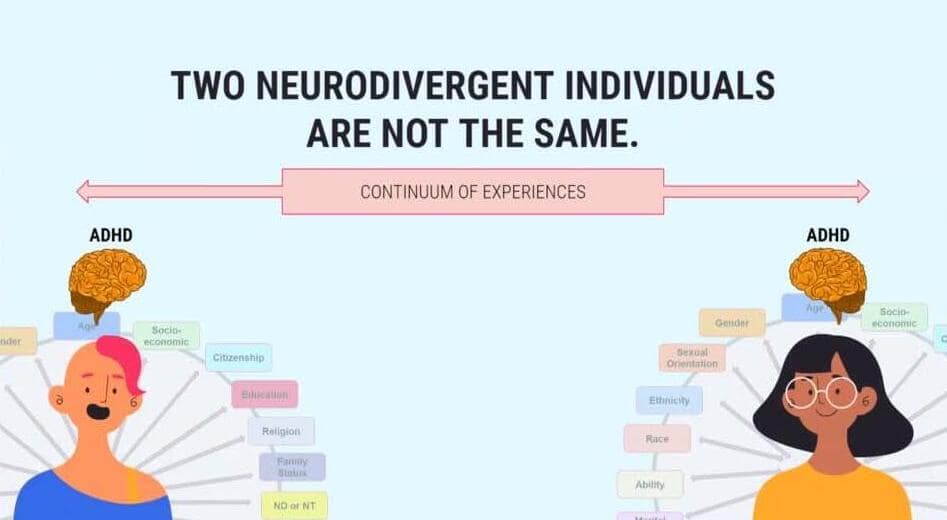
Types of Neurodivergence
Each condition and type of neurodivergence is unique and has its own set of challenges and strengths.
- Autism Spectrum Disorder (ASD): Individuals on the autism spectrum have a different way of processing sensory information and often are linked with displaying repetitive behavioral patterns. These individuals might face societal challenges but they have exceptional skills in art, mathematics, creativity and so on.
- Dyslexia: This is a condition that affects language and reading abilities or processing. Dyslexic individuals face challenges with reading, decoding words, spelling and so on. However, they are extremely creative and exceptional in fields requiring visual or dimensional skills.
- Attention- Deficit/ Hyperactivity Disorder (ADHD): Individuals with ADHD often face challenges with attention span, hyperactivity, impulsiveness, risk- taking behaviours, fidgeting, and so on. On the flip side, they are highly creative, energetic, compassionate and good at “out-of-the-box” thinking.
- Dyspraxia: This condition is usually related to the movement and motor coordination of our body. They hold difficulties in simple tasks like writing, balancing, tying shoelaces and so on. They are highly skilled at areas which require less manual dexterity.
- Sensory Processing Disorder: Individuals have either hyperactive or hypoactive sensory responses. They might be overly sensitive at times or might not perceive sensory inputs correctly. They are good at music, art, writing and so on.
- Tic Disorders and Tourette Syndrome: These conditions include repetitive movements or sounds which are also called tics. Individuals with Tourettes might experience a mix of motor tics (rapid eye blinking, head bobbing, arm jerking, and so on) and vocal tics(shouting, coughing, grunting, and so on).
How to know if you are neurodivergent?
A lot of individuals do not discover them being “neurodivergent” until they reach adulthood.
Diagnosis is essential as it will help an individual understand and discover things about themselves that they were not aware of. Neurotypical traits include not experiencing any of the above conditions or the mentioned signs.
Formal diagnosis
Our clinical and research community focuses more on neurophysiological measurements, however, the diagnosis or the recognition of clinical conditions related to neurodiversity is based on behavioral and cognitive measurements.
It is necessary to undergo formal diagnosis as it will provide personalised methods to deal in a better way.
For instance, ADHD is diagnosed on the psychoeducational and cognitive scales rather than brain scans.

Self- diagnosis
This is quite a valid form of identification and the initial step is understanding the characteristic feature of the conditions you are experiencing.
I have curated the signs one can watch for and then one can seek a precise diagnosis made by healthcare professionals. An official assessment can help you identify the nature of your neurodivergence and provide personalised support.
Strengths
Exceptional attention to detail, Sharp memory, Unique learning preferences (might prefer learning through visuals, auditory or practical applications), Creativity and Innovation, Reliability, Excelling in repetitive tasks.
Will society come to normalise Neurodivergence?
If we compare, today there is more awareness, more acceptance, shift in social attitudes, and adequate normalisation towards Neurodivergent individuals. Better than yesterday! However, when it comes to society we take time and effort. It is considered that each civilisation/ community defines its own conditions/ diseases. It all comes with identification and acceptability.
Summing up in many aspects, this process of “complete normalisation” is what neurodivergence is going to seek in the near future.
Evolutionary power of Neurodivergence
Have you pondered on the fact– why would you react calmly while your sister handles it furiously in the same situation. Or just maybe, in the near future you might have a different reaction in the same situation.
Therefore acknowledging neurodivergence will encourage meaningful reinforcements and shape the constant evolutionary patterns.
Conclusion
“Thoughts are experiments.” This one was mine —
Written by Sakshi- April, 2025.
Do You Know?
What’s Next for You?
Want to learn more about embracing your unique brain?
Stay tuned with Rachna Sahney Pargi Rachna Sahney Pargi Journey for Autistic Child Support, for more articles that dive deep into human diversity, mental health, and how to navigate life in a neurodiverse world.
References
- Goldberg, H. Unraveling Neurodiversity: Insights from Neuroscientific Perspectives. Encyclopedia 2023, 3, 972–980. https://doi.org/10.3390/ encyclopedia3030070.
- Dwyer P. The Neurodiversity Approach(es): What Are They and What Do They Mean for Researchers?. Hum Dev. 2022;66(2):73-92. doi:10.1159/000523723.
- Arnold L. A brief history of “Neurodiversity”; (2017). Neurodiversity: A Brief History – Neurodiversity @ Caltech
- Neurodiversity. (2025). Google Books. https://books.google.co.in/books?hl=en&lr=&id=tkSMPeUGEz0C&oi=fnd&pg=PR2&ots=Dfmdr0Tiw3&sig=2tBBIneTGVfPlze30PGAsROA3v4&redir_esc=y#v=onepage&q&f=false
- Bailin A. Clearing up some misconceptions about neurodiversity. Scientific American; (2019). https://blogs.scientificamerican.com/observations/clearing-up-some-misconceptions-about-neurodiversity/ [Google Scholar]
- Ballou E.P. What the neurodiversity movement does − and doesn’t − offer. Thinking Person’s Guide to Autism; (2018). http://www.thinkingautismguide.com/2018/02/what-neurodiversity-movement-doesand.html . [Google Scholar]

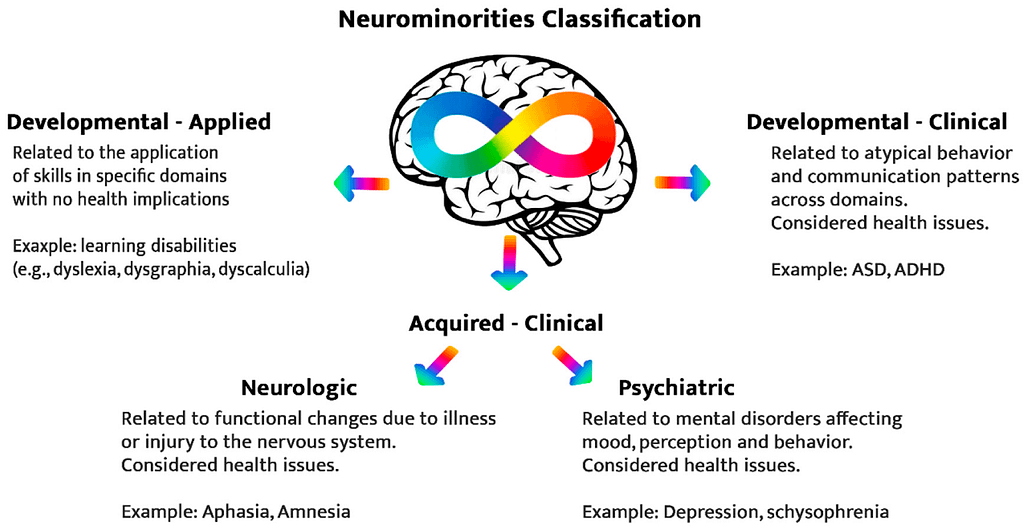
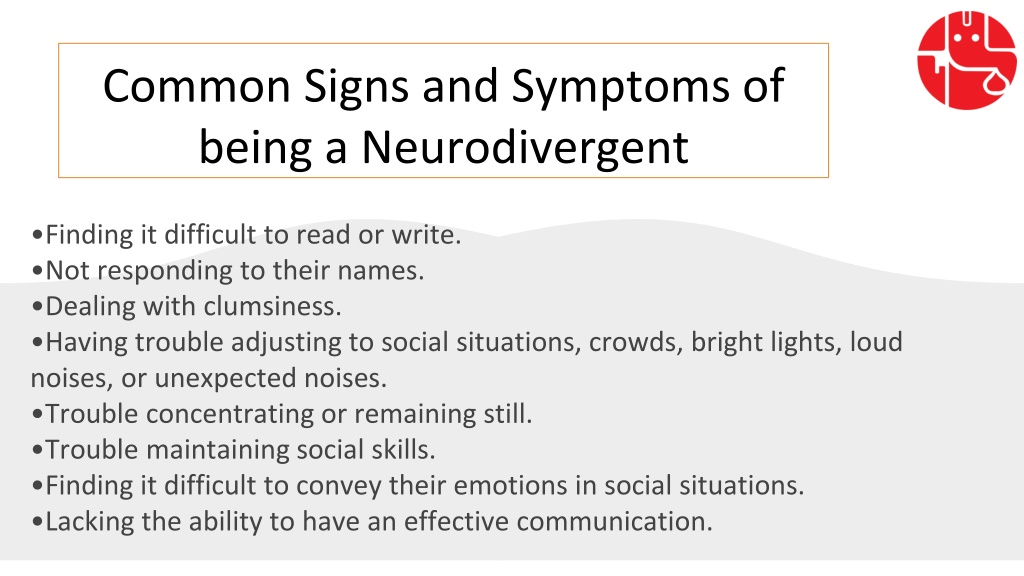

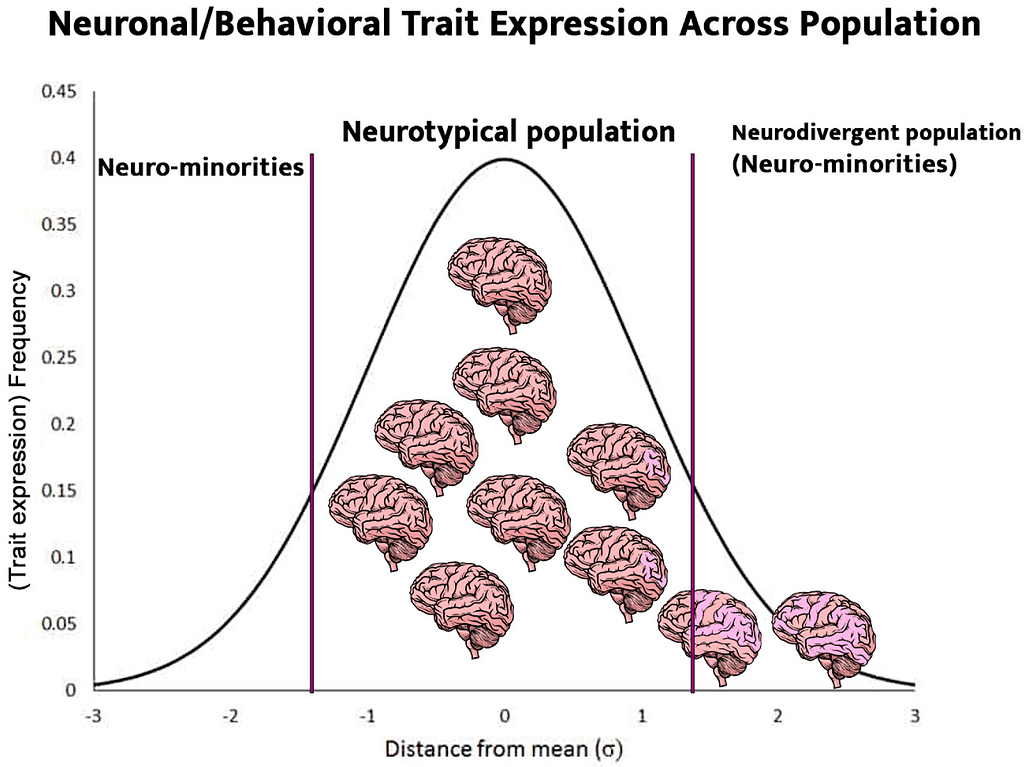

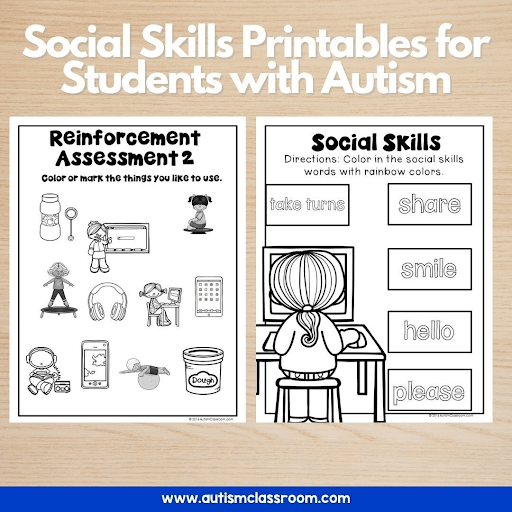

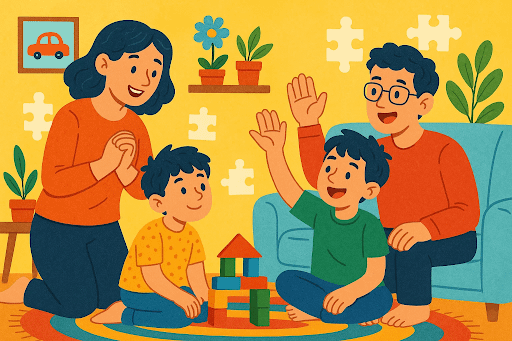
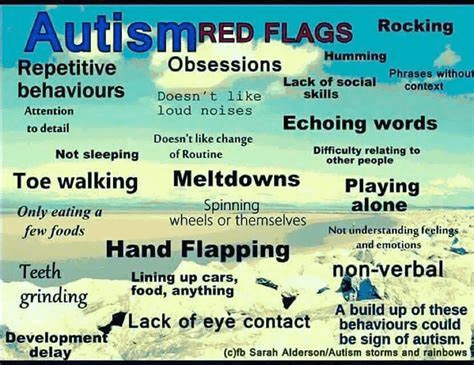




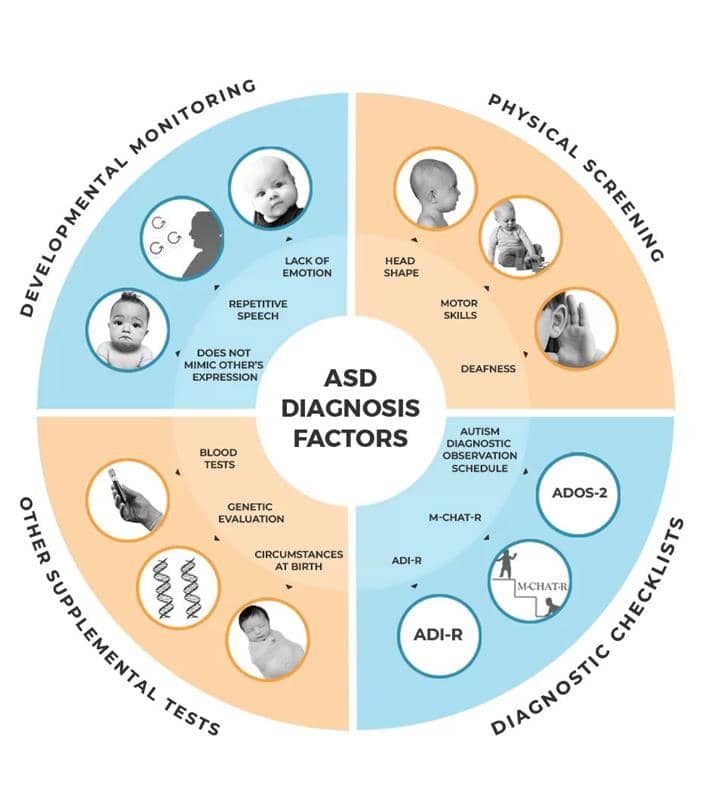
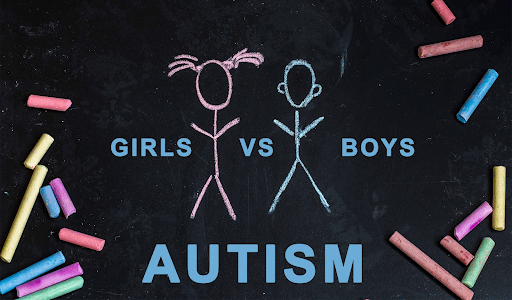

No comments yet. Be the first!